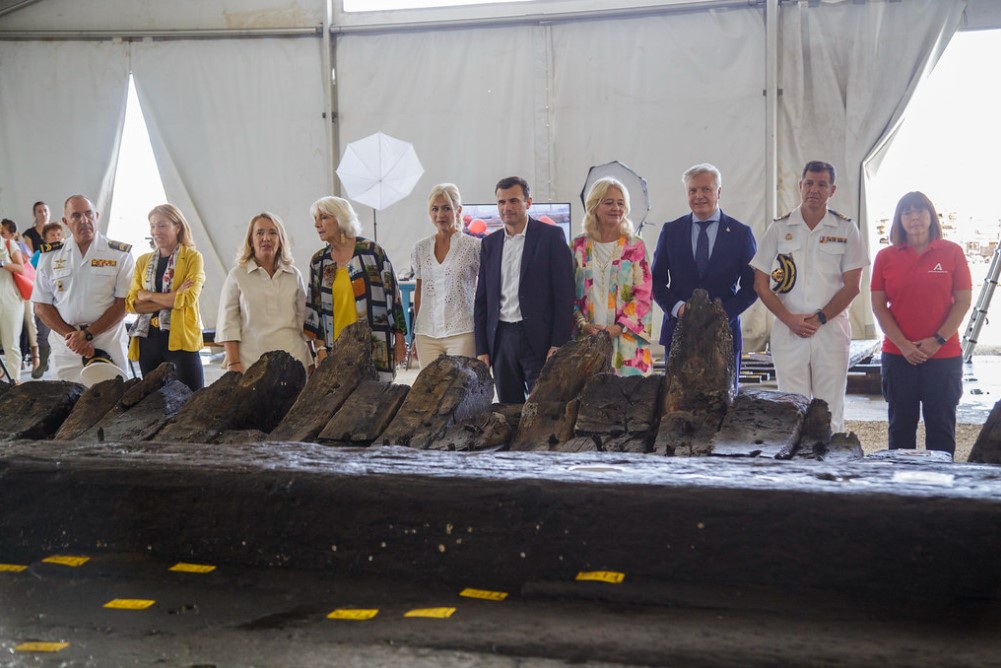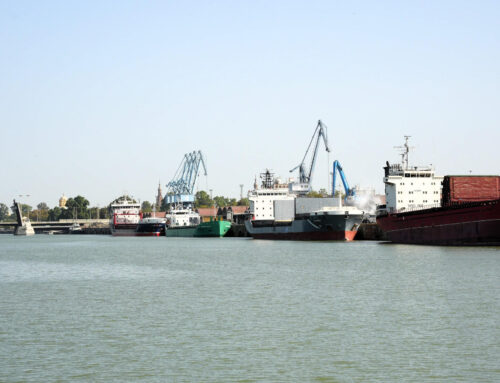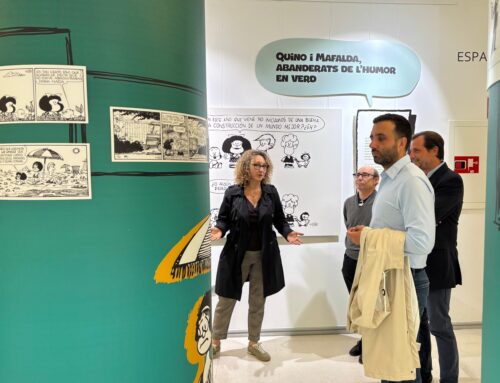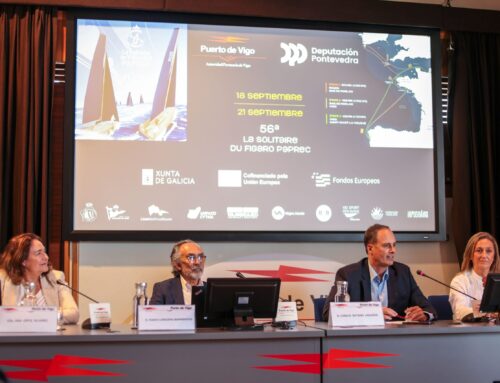The Underwater Archaeology Center (CAS), under the Department of Culture and Sport, is making progress in the investigation of the Delta I wreck after its extraction from the water last July by the Port Authority of the Bay of Cádiz. The technical team of CAS, a center specialized in submerged heritage from the Andalusian Institute of Historical Heritage (IAPH), is responsible for conducting an in-depth study of this 17th-century shipwreck, which was discovered in 2012 during the construction of the New Container Terminal at the Port of Cádiz.
During their visit to the tent located at dock 5, Patricia del Pozo, Minister of Culture and Sport, and Teófila Martínez, President of the Port Authority, accompanied by the Director General of IAPH, Juan José Primo, the Director of the Cádiz Repair Shipyard (Navantia), Antonio Domínguez, and the Naval Commander of Cádiz, Jaime Boloix, were able to inspect the state of Delta I, which is currently in the cleaning phase.
With this project, Del Pozo stated, “Andalusia is at the forefront of scientific research in the conservation of underwater archaeological heritage,” since “this is the first time in Spain that the remains of a ship from this era are being studied out of the water.” In this regard, it should be noted that internationally, there have been very few extractions of shipwrecks of these characteristics for investigation, with the most notable reference being the case of the Vasa ship in Stockholm.
Additionally, the minister highlighted that “the cultural heritage represented by Delta I is significant to the historical richness of the city of Cádiz and its port, which have been points of encounter and connection between different civilizations and cultures over the centuries.”
For her part, Teófila Martínez positively evaluated the progress of the archaeological work, which, once completed, will allow “the disassembled parts of the ship to be returned to the sea, where they will be preserved for the future in a reversible and perfectly georeferenced deposit.”
So far, the sediments from the first structural level have been manually removed, and concretions have been cleared from the ship’s hold floor. The wooden parts that make up the ship have also been identified with tags. The various fastening elements have been marked to identify construction patterns, as explained by Milagros Alzaga, head of the Underwater Archaeology Center. During this process, ten incomplete artillery pieces were found, along with stones of different sizes from the ship’s ballast.
These works, currently being carried out at the most superficial level of the ship, precede the disassembly of the internal lining of the structure, and the excavation, recording, and disassembly of subsequent construction phases. In the coming weeks, all the disassembled wooden parts will be cleaned, scanned, and photographed. For preservation purposes, they will be submerged in specially designed pools.
The lowest part of Delta I, corresponding to the ship’s “floor,” retains 20.32 meters of length by 6.80 meters of beam. Its exceptional discovery provides a unique opportunity to understand how ships were built in the mid-17th century. So far, there are only documents referring to proportions or very specific aspects of naval construction techniques from that period, such as joining elements, maximum tonnage, and the draft that ships were required to have.
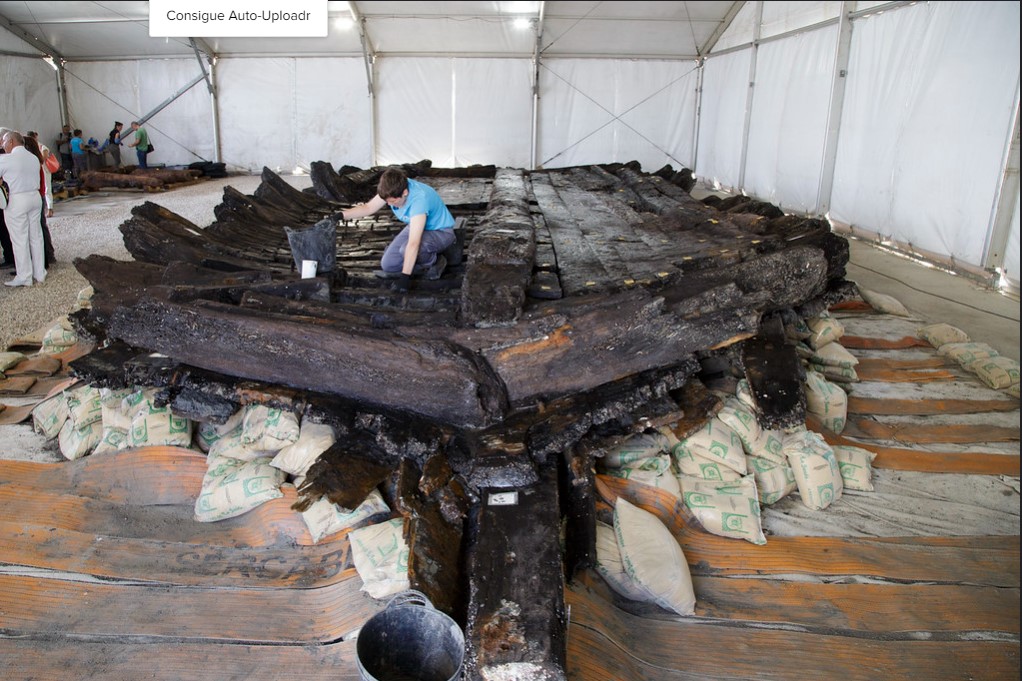
3D Model of the Wreck
Identifying the vessel is another objective of the Underwater Archaeology Center. Archival research is being conducted, and the results will be compared with the data provided by the archaeological investigation of Delta I. The goal is to obtain relevant information about the ship’s nationality, construction process, typology, and lifespan, as well as to understand why it was in Cádiz and the reasons for its sinking.
In parallel, a three-dimensional model of the wreck—created through photogrammetry and 3D design programs—and a dendro-archaeological study of the wood from which it was built will shed light on the chronology and origin of the construction materials. The wood samples, which will help identify the species and origin of the forest resources used, will be analyzed in the United Kingdom at the laboratories of the University of Wales Trinity Saint David.
The scientific study of the Delta I wreck, led by Nuria E. Rodríguez, a research technician at CAS, also involves collaboration from professionals at the Institute of History of the Spanish National Research Council (CSIC) and the universities of Wales, Lisbon, and Alicante.

